The Seiko Museum
1.Timepiece History Highlights
One of the most fascinating areas of the Seiko Museum is on the first floor, which tracks the origins of timekeeping through to the late 19th century.
You may be particularly intrigued by the museum's very own sundials from China and Korea. Sundials are the oldest known devices for telling time, the earliest example being a stick, or a pillar whose technical name is a gnomon, to cast a shadow that thus indicated the time.
Sundials
Sundials likely first appeared in Egypt. The Chinese seem to have started using them since the Zhou Dynasty (1046 to 256 BC). The museum's Chinese sundial is an equatorial model. It was made in around the 18th century during the Qing Dynasty (1644 to 1911). The gnomon points to Polaris and casts a shadow that is parallel to the equator.
That mightn't mean much to you, since the exhibit is indoors. So, if you are on a tour, Seiko Museum staffers will kindly turn on lights placed in special positions to artificially demonstrate the time. What's you might find intriguing if you are from the West is that the hour indications feature the 12 signs of the Chinese zodiac.
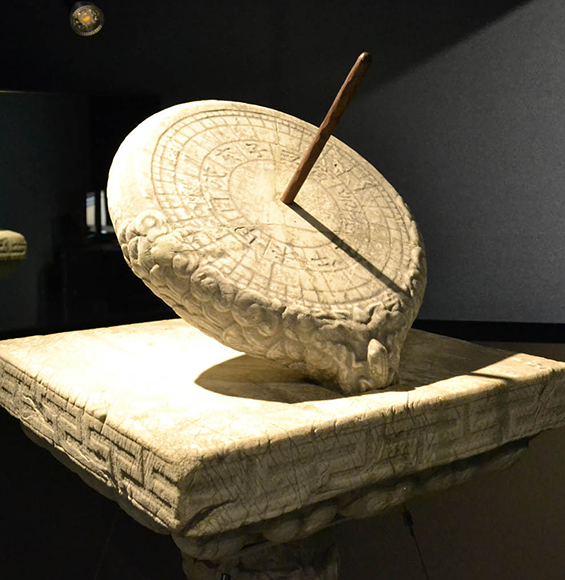
Sundials are the oldest known devices for telling time.
Incidentally, when you see the shadows rotate toward the right you might wonder why that is so. Sundials were particularly used in the northern hemisphere, where shadows traversed to the right. That direction is what we now call clockwise.
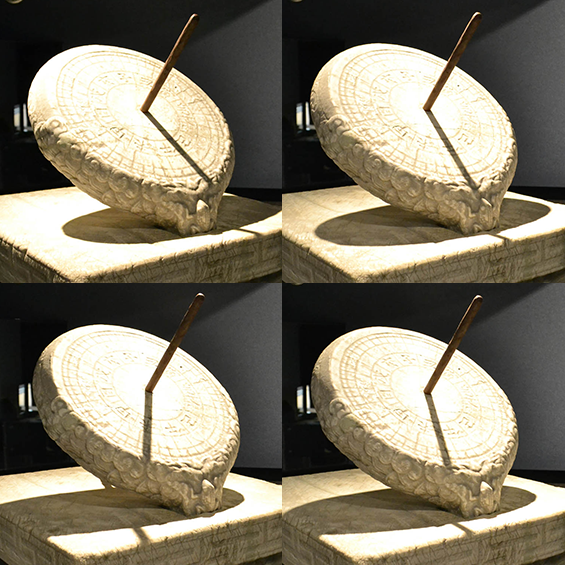
The shadows rotate toward the right
The Korean sundial is portable, and is from the 15th century. It is hemispherical and stands on four legs. One of the engraved indications in this piece shows the exact latitude of Seoul. Also worth a look is a Japanese paper sundial from the Edo Period (1603 to 1867).
If you're keen on sundials, you can buy portable models from the Museum Shop. Alternatively, numerous websites show how to make your own sundial. A good place to start is a NASA website (http://www-istp.gsfc.nasa.gov/stargaze/Sundial.htm). You might also wish to visit the website of the American Sundial Society (http://www.sundials.org)
Iron frame clock
Once you've enjoyed the sundials you'll want to see the iron frame clock. It's from around the 16th century in the United Kingdom. It uses mechanisms that were invented in Europe in the 13th century. These elements include a weight, crown wheel escapement (a device that transfers energy to the timekeeping part of a clock), a foliot balance (that's a bar with weights on the end), and a bell striker to indicate the time.
Sound was everything with clocks in those days, as they didn't have faces and were supposed to be audible for long distances. Dials appeared when people wanted to also read the time. Seiko Museum guides will wind up the iron frame clock so you can see and hear it in action.
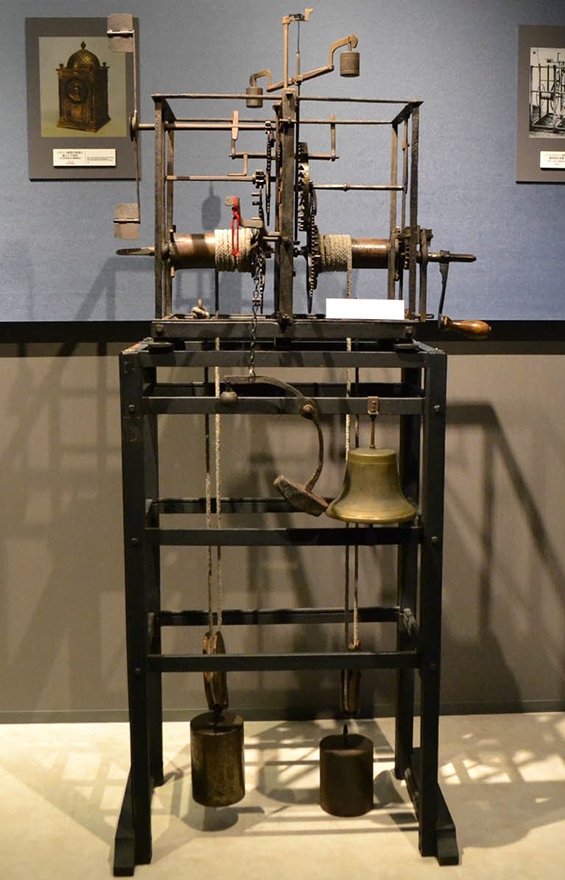
Iron frame clock from around the 17th century in the United Kingdom.
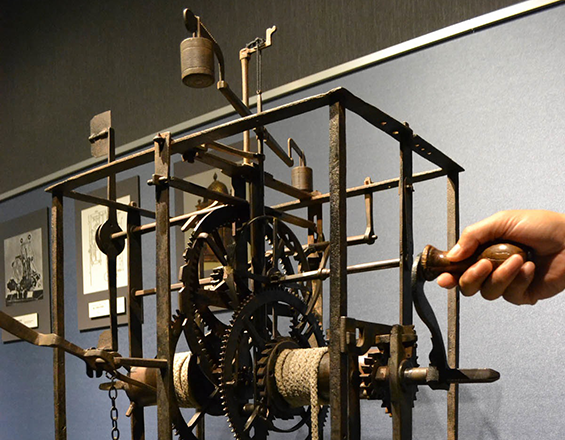
Guides will wind up the iron frame clock so you can see and hear it in action.
Another hefty mechanical piece is a tower clock that is the prototype of the model used in London's Big Ben. The clock is weight-driven and features a double three-legged gravity escapement mechanism that became fairly common in tower clocks. According to Mark Frank, who has written extensively about the evolution of tower clock movements, one of the advantages of this escapement is that the pendulum is essentially detached from the clockwork, which safeguards movements from disruptions when winds affect the exterior hands.
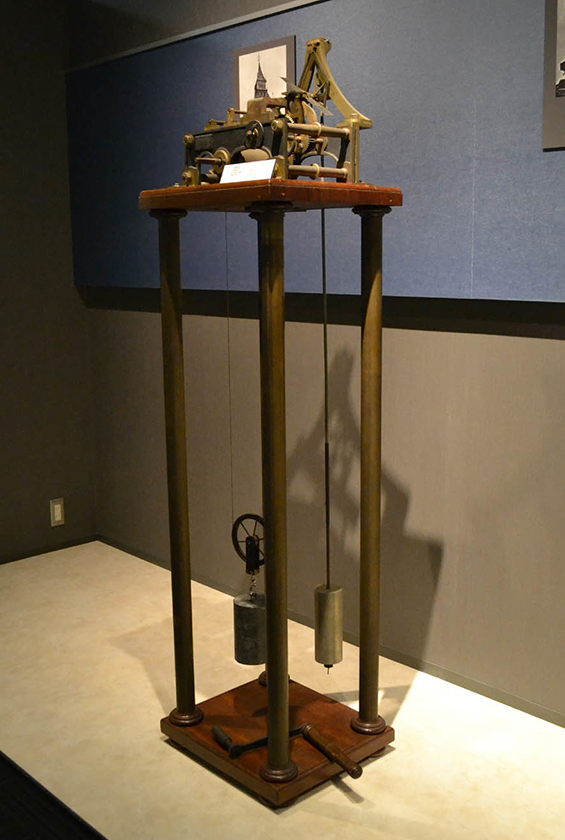
The prototype of the model used in London’s Big Ben.
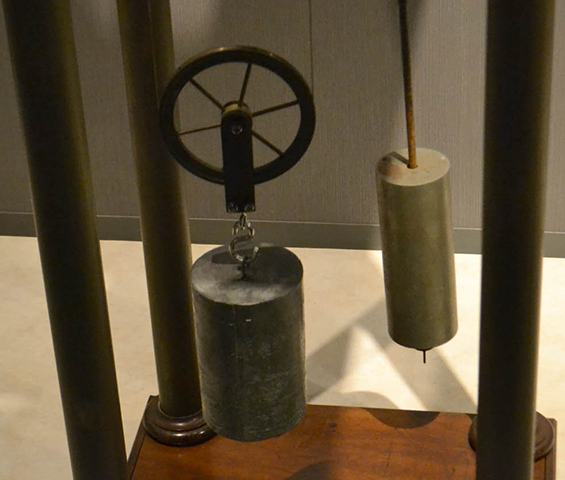
The clock is weight-driven.